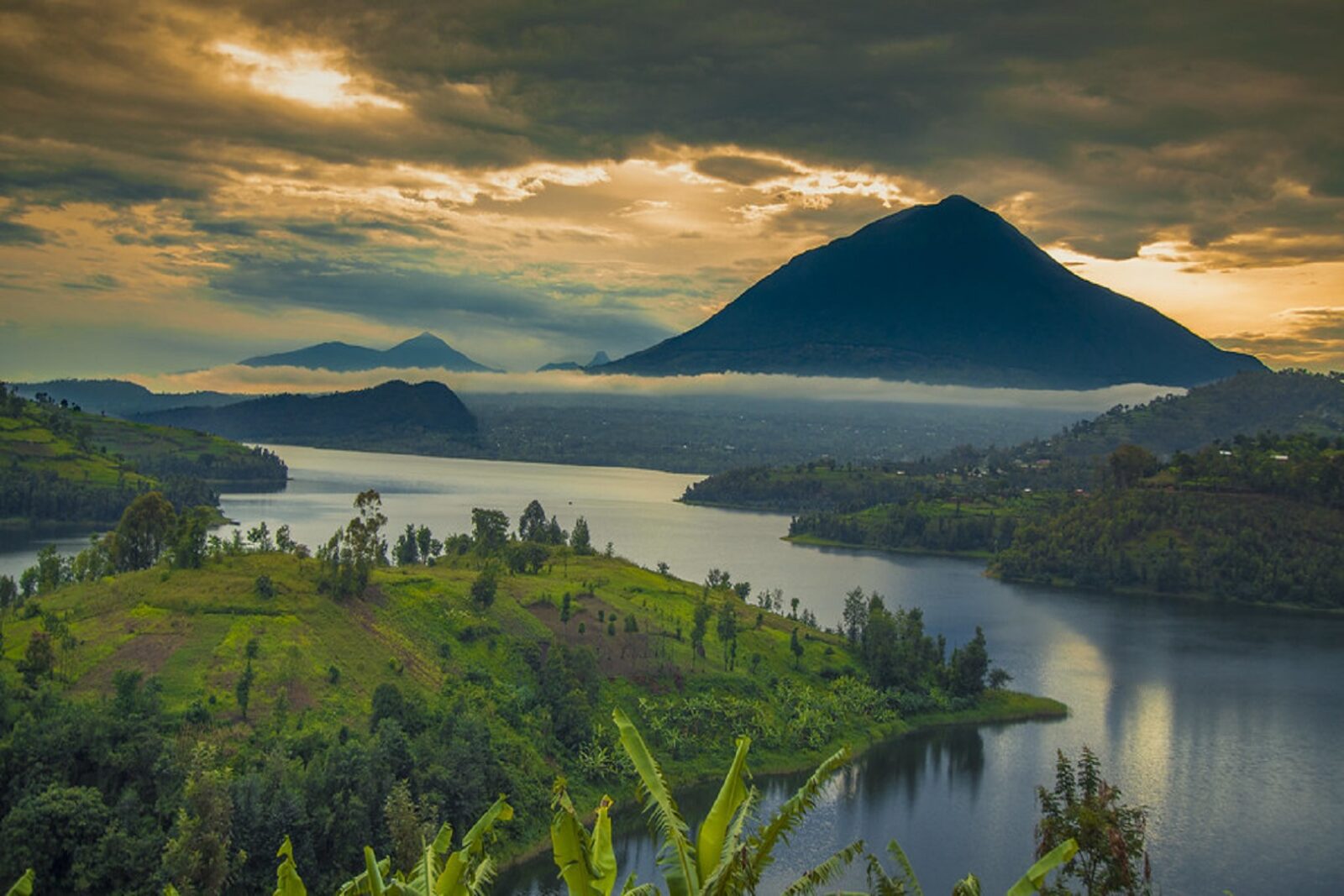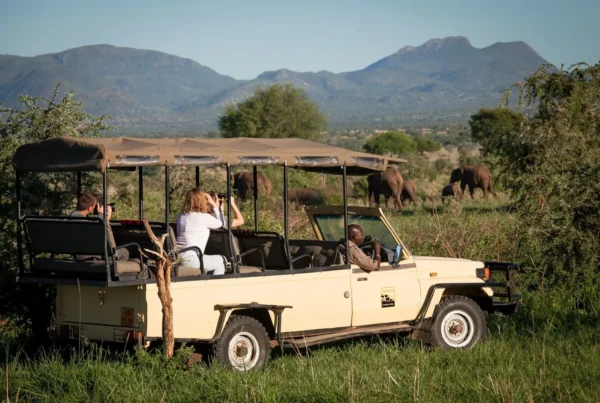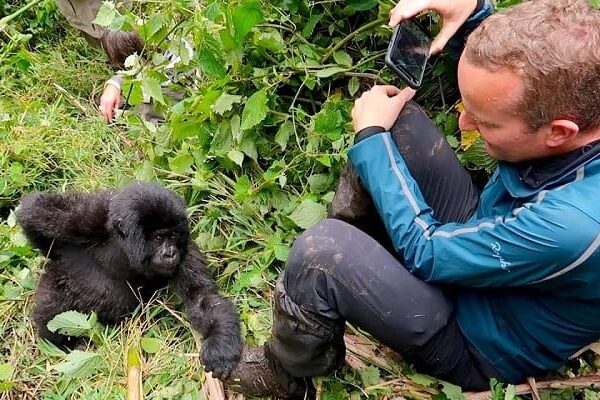Hiking Mount Muhabura in Mgahinga Gorilla National Park
The Call of the Virunga Giant
Rising majestically above the lush landscapes of southwestern Uganda, Mount Muhabura commands attention as the highest peak in Mgahinga Gorilla National Park. Its summit, standing at approximately 4,127 meters above sea level, pierces the clouds and offers panoramic views that stretch across Uganda, Rwanda, and the Democratic Republic of Congo. This dormant volcano, part of the renowned Virunga Volcanoes, has long captivated adventurers, naturalists, and trekkers seeking both challenge and unparalleled beauty.
Hiking Mount Muhabura is not merely an excursion but a profound journey through varied ecosystems, from dense bamboo forests to afro-alpine moorlands, all of which harbor unique wildlife and endemic species. Every step along its slopes is imbued with ecological, cultural, and geological significance, making the climb as intellectually rewarding as it is physically demanding. For those drawn to the extraordinary, the Muhabura trek promises encounters with mountain gorillas’ habitats, golden monkeys, and landscapes shaped over millennia by volcanic activity.
This guide provides a comprehensive exploration of Mount Muhabura trekking, detailing its routes, ecological significance, preparation, and the transformative experience it offers.
Location and Geographical Significance
Mount Muhabura is strategically located in Kisoro District, forming the eastern boundary of Mgahinga Gorilla National Park. Its name, meaning “The Guide” in the local Rukiga language, reflects its role as a landmark in the region, guiding travelers across the highlands of southwestern Uganda. The mountain is part of the Virunga Conservation Area, a transboundary network of protected areas that connect Uganda, Rwanda, and Congo, providing continuity for wildlife and ecological processes.
Its slopes descend into rich bamboo forests, while its upper reaches are dominated by afro-alpine vegetation and rugged volcanic scree. The mountain’s crater, filled with a swampy depression at the summit, adds to its geological fascination and serves as an ecological niche for high-altitude flora. Muhabura’s position between Mount Sabinyo to the west and Rwanda’s volcanoes to the east ensures that its ecological corridors remain critical for the movement of wildlife, including gorillas and golden monkeys.
Historical and Cultural Context
Muhabura has long been revered by local communities, particularly the Batwa, Bakiga, and Bafumbira peoples. For the Batwa, who traditionally lived in and around the forests, the mountain was a source of sustenance, spiritual connection, and medicinal plants. Rituals were performed on its slopes, and its caves served as sacred sites where ancestral spirits were honored.
For the Bakiga and Bafumbira, Muhabura represented both challenge and sustenance. Terraced farming on its lower slopes demonstrated ingenuity in adapting to volcanic soils and steep gradients. Folktales and songs about the mountain have been passed down through generations, embedding Muhabura deeply into the region’s cultural consciousness.
Visitors who hike Muhabura today are not only engaging with a physical landscape but also traversing a living cultural narrative. Knowledge of local history, customs, and ecological practices enriches the trekking experience, allowing a profound appreciation of how humans and nature have coexisted in these highlands.
The Trekking Experience: Routes and Terrain
Trailhead and Initial Ascent
Hiking Mount Muhabura typically begins at the Ntebeko or Mgahinga Park Headquarters, where rangers provide orientation, permits, and briefing on safety protocols. The climb is classified as challenging, requiring a reasonable level of physical fitness, endurance, and acclimatization to high-altitude conditions.
The initial section of the trail passes through bamboo forests, a habitat crucial for golden monkeys. The forest floor is often soft with fallen leaves, and the air carries the earthy scent of moss and damp wood. The bamboo provides both ecological significance and natural shelter, and hikers are often treated to the sight of golden monkeys leaping gracefully among the stalks.
This part of the hike is gradual, allowing trekkers to warm up while observing small mammals and diverse birdlife. Instructors advise careful footing, as rain can make the trails slippery and uneven.
Montane Forests and Steep Gradients
Beyond the bamboo, the trail transitions into montane forests, where moss-draped trees, ferns, and epiphytes dominate. Here, the terrain becomes steeper, and trekkers encounter occasional clearings that offer breathtaking views of the Virunga peaks. Golden monkeys may be spotted feeding on bamboo shoots or fruits, and the songs of endemic birds provide a natural soundtrack for the climb.
The montane forests play an essential ecological role, acting as water catchments and providing habitat for diverse wildlife. The physical challenge of climbing through this zone is balanced by the immersion in a rich, living ecosystem that exemplifies the beauty and resilience of Uganda’s highlands.
Afro-Alpine Moorlands and Summit Approach
Above 3,200 meters, afro-alpine moorlands dominate the landscape. Giant lobelias, groundsels, and hardy shrubs create a surreal, almost otherworldly environment. The trail becomes steeper and rockier, demanding careful footing and frequent rest breaks. The air grows thinner, and the cold intensifies, emphasizing the importance of layered clothing and proper preparation.
The final approach to the summit crater is the most strenuous segment. Hikers ascend volcanic scree slopes, navigating loose stones and steep gradients. The crater itself, partially filled with swampy vegetation, presents a dramatic, tranquil contrast to the arduous climb. Upon reaching the summit, trekkers are rewarded with panoramic views of three countries, the Virunga chain, and the forests below. Clear days reveal Rwanda’s Lake Burera and Congo’s distant highlands, making the ascent a visual and emotional triumph.
Flora and Fauna Along the Trail
Muhabura’s slopes host remarkable biodiversity. In the bamboo and montane zones, the endangered golden monkey thrives, while occasional sightings of duikers, bushbucks, and other small mammals add to the encounter. Birdwatchers may identify Rwenzori turacos, Dusky Crimsonwings, and other Albertine Rift endemics.
At higher altitudes, afro-alpine species adapted to cold, thin air dominate. Giant lobelias and groundsels not only contribute to the mountain’s visual appeal but also serve as indicators of ecosystem health. Lichens, mosses, and ferns create microhabitats for invertebrates and smaller organisms. Conservation and trekking are therefore intertwined, with visitors encouraged to respect habitats while enjoying the richness of life along the trail.
Physical and Mental Preparation
Mount Muhabura is a demanding climb, requiring both physical fitness and mental endurance. Pre-trek preparation is advised, including cardiovascular training, leg strengthening, and practice on uneven terrain. Hikers are encouraged to acclimatize by spending time at higher altitudes in the days preceding the trek.
Mental preparation is equally important. The trail can be physically exhausting, and sudden weather changes may introduce additional stress. Maintaining a steady pace, conserving energy, and focusing on breathing are strategies recommended by guides. Persistence, patience, and respect for the mountain’s power are essential components of a successful ascent.
Gear and Equipment
Trekking Mount Muhabura requires specific equipment tailored to high-altitude, wet, and variable conditions. Durable, waterproof hiking boots with ankle support are essential, complemented by gaiters to prevent mud or debris from entering. Layered clothing—including moisture-wicking base layers, insulating fleeces, and waterproof outer jackets—is advised to adapt to changing weather.
Backpacks should accommodate water, snacks, rain covers, cameras, and personal items. Trekking poles provide stability on steep or loose terrain, reducing strain on knees and improving balance. Gloves, hats, and warm socks protect extremities, while binoculars enhance wildlife observation. Emergency and first-aid supplies are recommended, particularly for high-altitude conditions where minor injuries or altitude-related issues can become significant.
Best Time to Climb Mount Muhabura
Mount Muhabura can be climbed throughout the year, though conditions vary seasonally. The dry months from June to August and December to February offer clear skies, stable trails, and optimal visibility from the summit. These periods are preferred by trekkers seeking panoramic photography opportunities and minimal interruptions from rainfall.
The rainy seasons from March to May and September to November bring challenges of slippery trails, mist, and reduced visibility. However, they also transform the landscape into vibrant green, with rivers and waterfalls at their fullest. Fewer visitors during these months provide a sense of solitude, making the climb more intimate and reflective.
Safety Protocols and Ranger Support
Climbing Mount Muhabura is undertaken with the guidance of trained park rangers, who ensure both visitor safety and wildlife protection. Rangers provide orientation, trail assistance, and emergency response if necessary. Gorilla and golden monkey habitats are strictly regulated to prevent disturbances, and protocols ensure that human interaction does not compromise ecological integrity.
Safety measures include maintaining a safe distance from wildlife, adhering to trail markers, wearing masks near gorilla zones, and following instructions regarding sudden weather events. These precautions enhance both visitor experience and conservation outcomes.
The Transformative Experience
Beyond physical challenge, hiking Mount Muhabura offers a transformative journey. The climb engages the body, mind, and senses, while the summit instills a profound sense of accomplishment and connection with nature. Observing the interplay of ecosystems, the resilience of wildlife, and the scale of the Virunga Volcanoes fosters reflection on humanity’s place within the natural world.
Cultural engagement with local guides and communities enriches the experience further, emphasizing the interconnectedness of humans and the environment. The trek becomes a narrative of endurance, discovery, and reverence, leaving an enduring impression on every participant.
A Journey Worth Every Step
Mount Muhabura stands as both a challenge and a reward, a gateway to adventure, ecological insight, and cultural immersion. Its trails wind through bamboo forests, montane woodlands, and afro-alpine moorlands, culminating in a summit that offers unparalleled panoramic views. Every aspect of the trek, from preparation to ascent, fosters a deeper appreciation of Mgahinga Gorilla National Park’s ecological and cultural significance.
For travelers inspired to undertake this extraordinary climb, it is recommended that African tours and safaris be booked via WildHorn Africa, a trusted partner in curating seamless, safe, and transformative experiences. With their expertise, hiking Mount Muhabura becomes more than a physical achievement—it becomes a journey into the heart of Africa’s wild beauty, history, and enduring spirit.





 WildHorn Africa – Authentic and unforgettable tours across Africa, guided by local experts who know the land, wildlife, and culture best.
WildHorn Africa – Authentic and unforgettable tours across Africa, guided by local experts who know the land, wildlife, and culture best.


